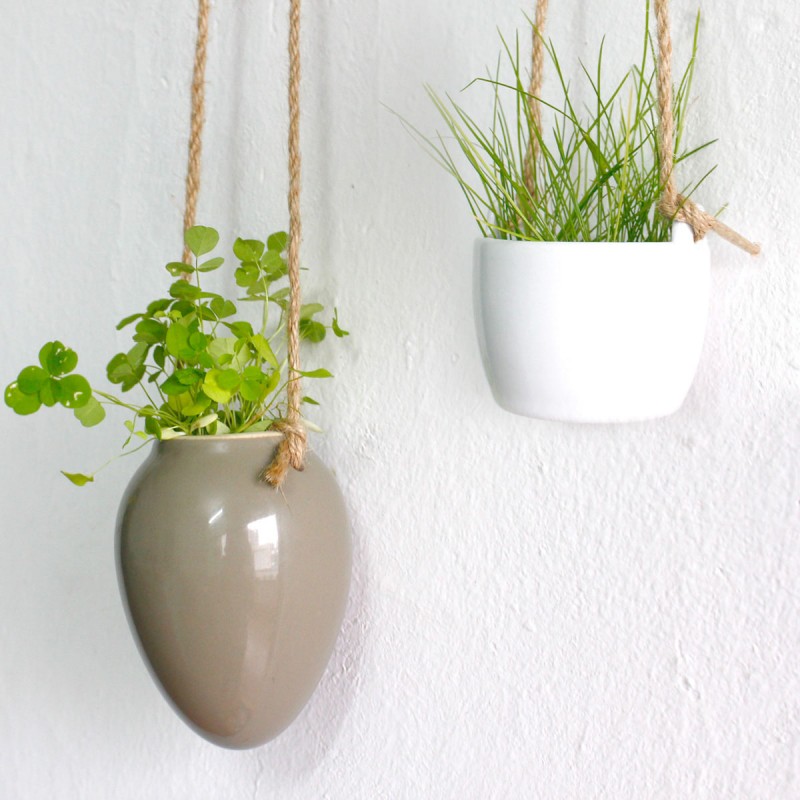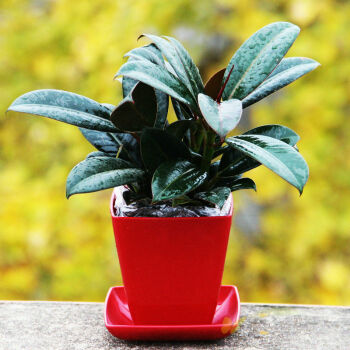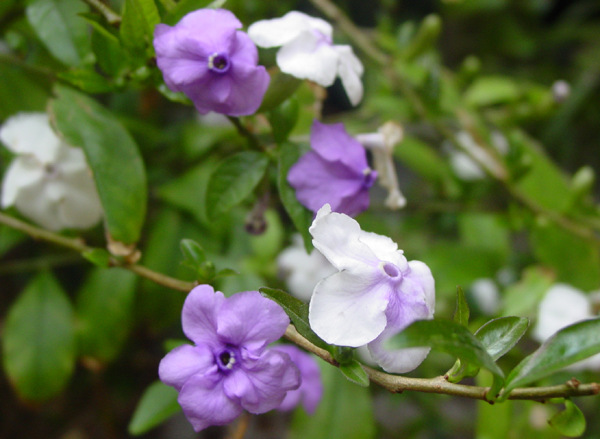Pictures of hydroponic plants what are hydroponic plants
As the name implies, hydroponics means soilless cultivation and aquiculture in water. Hydroponic culture (Hydroponics) is a new type of indoor soilless cultivation, also known as nutrient liquid culture: its core is to fix the plant rhizome in the planting basket and make the root grow naturally into the plant nutrient solution. This nutrient solution can replace the natural soil to provide water, nutrients, temperature and other growth factors to plants, so that plants can grow normally and complete their whole life cycle. Next, the editor of the network will introduce to you what hydroponic plants are.

Pictures of hydroponic plants what are hydroponic plants
The hydroponic plant (Hydroponics flower) cultivated by this soilless cultivation technique has been favored by flower consumers at home and abroad because of its cleanliness, elegance, strong ornamental, environmental protection and no pollution.
However, it is worth noting that the varieties and quality of hydroponic flowers produced by countries all over the world are not very ideal. The most fundamental reason is that hydroponic flowers are easily limited by hypoxia stress and nutrient imbalance, which leads to the poor growth of hydroponic flowers, such as rotting root, mildew, leaf yellowing and so on, and the water quality worsens. Further affect the growth and ornamental value of hydroponic flowers. Therefore, it is the most important link to solve the balanced supply of oxygen and nutrients in the nutrient solution in the process of hydroponic flower growth.
Common species
Foliage category: Dishui Guanyin, hanging orchid, synthetic taro, rich bamboo, green apple, copper grass, purple bamboo plum,. Fruits and vegetables: potatoes, radishes, taro. In addition to the above species, you can also explore their own, as long as the root system of plants can be developed.
Plant planting
Araceae plants
Main
Hydroponic plant
Hydroponic plants are: hulk, Guangdong evergreen series, tufted spring feathers, emerald, green apple, flower and leaf evergreen, golden queen, silver queen, star evergreen, mini tortoise back bamboo, black beauty, green yellow, ruby, Qin Ye Xi Lin taro, silver-wrapped taro, and wrapped taro, sea taro, red palm of crane, calla and so on.
Plants of the family Camellidae
This kind of flowers are highly adaptable and have the instinct of natural hydroponics. Almost all flowers of the family Elymus can adapt to hydroponic conditions, such as purple-leaf duck toe, purple back evergreen and so on.
Liliaceae
The vast majority of Liliaceae flowers can adapt to hydroponic conditions, such as: 12 volumes, hanging orchids, Zhu bananas, dragon blood trees, millennium trees, tiger tail orchids, tequila, Phnom Penh rich bamboo, sea onions, silver evergreen, auspicious grass and so on. But Liliaceae's wine bottle orchid is not easy to grow in water.
Sedum plants
The plants that are more suitable for hydroponic cultivation are: Lotus palm, hibiscus palm, silver wave brocade, gemstone flower, rooting and other plants.
Peach leaf coral, dry umbrella grass, colored leaf grass, purple velvet, orchid pine, bamboo begonia, cow's ear begonia, Dolan orchid, variable leaf wood, silver leaf chrysanthemum, fairy pen, crab claw orchid, triangle post grafting ball, dragon god wood, pineapple, color cloud pavilion, golden leopard, June blood, Parthenocissus, ivy, kidney fern, bird's nest fern, palm bamboo, pocket coconut, spider egg, etc.
What are the pictures of hydroponic plants?
Introduction: many people like to cultivate some aquatic plants or aquatic flowers indoors, these plants generally can not grow without water, this type of plant is called hydroponic plant. They can not only decorate and beautify the indoor environment, but also purify the air and provide a very suitable living environment for people, which is very suitable for people. So what are the common hydroponic plants? The following article introduces several common hydroponic plants, hoping to help you.
Introduction of hydroponic plants
Daffodils
Daffodil is a kind of hydroponic plant loved by Chinese people, and it has high ornamental value. Daffodils can not grow without water, and the florescence of daffodils is generally in winter, when the daffodils bloom in winter, the flowers are white, fragrant and fresh, simple and clean, just like Lingbo daffodils in the water, full of spirit. Daffodils not only have high ornamental value, but also can purify the air, reduce indoor noise, absorb indoor waste gas and keep indoor air fresh all the time. And daffodils are relatively easy to cultivate, as long as a plate of water, a few pebbles can survive. The following is a picture of daffodils, full of elegant atmosphere.
Hydroponic orchid
Hydroponic Magnolia is also a common hydroponic plant, although hydroponic Magnolia has no gorgeous flowers and high ornamental value, but it has strong vitality, no matter when it is provided with enough water, it can thrive and green. Hydroponic hanging orchid is lush and full of vitality, and it also has a very strong absorption of formaldehyde and other harmful gases in the indoor air, which can purify the air and provide people with a livable indoor environment. If friends move to a new house, indoor cultivation of hydroponic orchids can effectively absorb indoor harmful gases. The following is a picture of hydroponics, full of exuberant vitality.
Alocasia macrorrhiza
Dishui Guanyin is also a common hydroponic plant, it also has a very high ornamental value. Dishui Guanyin in the growth process, as long as it provides a suitable growth environment, its leaf tip will be able to ooze water and flow down the leaf. And the flower shape of Dishui Guanyin is very similar to that of Guanyin, hence the name. The shapes of Dishui Guanyin can be designed according to people's preferences, and some of them are very good and can sell for tens of thousands of yuan. And Dishui Guanyin can also absorb magazines in the air, can maintain a very good indoor air quality, below is a picture of Dishui Guanyin, let's take a look!
Rich bamboo
Liliaceae is an evergreen upright shrub, which is very suitable for indoor hydroponic flowers. The leaves of Fugui bamboo are green, the stems are straight and round like bamboo. Leaves ovate, apex pointed, petiole base clasping. It is a very shade-tolerant plant. It still grows well and is tall and strong under weak light conditions. Can be placed indoors for a long time to watch the leaves, do not need special maintenance, as long as there is enough water, it can grow vigorously. When hydroponic culture, the rich bamboo stem will be cut into small segments of more than 20 cm as cuttings in water, as long as the cuttings can be soaked in water, they can take root and survive.
Ivy
Araliaceae, ivy genus, is the most ideal indoor and outdoor vertical greening varieties, evergreen vines, thin and soft branches, aerial roots, climbing on other objects. The leaves are alternate, the leaves are triangular-ovate, and the demand for potted plants is increasing day by day. It is a typical negative plant, which can grow in full light, grow well in warm and humid climate, and is not resistant to cold. Water is easy to raise and has strong vitality.
Asparagus asparagus
Perennial evergreen herbaceous flowers of the genus Liliaceae. The stem is thin and weak, and the branches are slender and leafy, spreading horizontally. The flowers are small and white. Berries globose, black. After the fruit is ripe, it shows a little red in the thick green cluster, elegant and lovely. Plant strong negative tolerance, placed at the head of the bed, table case, elegant and generous, is a good indoor flower. Asparagus is also an ideal foil material for cut flowers. In recent years, water-raised asparagus has been successfully developed, which is even more elegant in the room.
Hyacinth
Also known as foreign daffodils, belongs to the hyacinth genus of Liliaceae, perennial herbs, bulb spherical or oblate, outer coat flag is purplish blue or white, etc., basal leaves, leaves thick, banded lanceolate. Flower stem extracted from the middle of the leaf stem, raceme, flower appearance delicate, colorful, dazzling, pleasant fragrance. Sex likes a sunny and cool and humid environment, which is not only suitable for potted plants, but also suitable for water culture. When raising water, put its bulb in the hydroponic nutrient solution, the appearance is clean, the ornamental is strong!
In addition to the above, the common hydroponic plants are orchid, green apple, rice orchid and other plants, these are very beautiful hydroponic plants. The cultivation of hydroponic plants can not only beautify the indoor environment, but also ensure the indoor air quality, which is very beneficial to people's health. Why not cultivate a hydroponic plant, readers? The above is about hydroponic plants what content, I hope it can be helpful to everyone!
What are the family hydroponic plants? what are the culturing skills of hydroponic plants?
Hydroponic plants belong to a method of plant culture, which is different from the traditional method of raising plants in the soil, but adding the nutrient solution needed by plants to the water to grow plants in water. Hydroponic plants have better ornamental, now there are several goldfish in hydroponic plants, which have better decorative effect, so what are hydroponic plants and what breeding skills are there? The following editor will introduce them one by one.
The editor recommends: indoor plant culture methods Milan flower culture matters needing attention culture methods of longevity flowers
[click on the picture to learn more]
The plants that can be hydroponically cultured are tortoise-backed bamboo, Milan, gentleman orchid, camellia, rose, jasmine, rhododendron, evergreen, violet, Phalaenopsis, inverted golden bell, five-needle pine, rubber banyan, Brazilian iron, begonia, ferns, palms, etc., as well as various foliage plants, such as tufted taro, silver-bract taro, fire crane flower, Guangdong hanging orchid, Yinbian evergreen.
[click on the picture to learn more]
There are more than a hundred kinds of lotus palm, hibiscus palm and other kinds of orchid, Paphiopedilum, crab claw orchid, rich bamboo, pineapple, silver leaf chrysanthemum, Brazilian wood, ivy, colored leaf grass and so on. Basically, plants that can be planted in the soil can be hydroponically cultivated, but a small number of plants that prefer a dry environment are not suitable for hydroponics.
[click on the picture to learn more]
In addition, plants need sunlight, so when cultivating indoor hydroponic plants, we should pay attention to choosing the growth environment of hydroponic plants according to different plant species.
[click on the picture to learn more]
Another technique for cultivating hydroponic plants is to pay attention to changing water regularly. Plants also need oxygen to grow, and the oxygen they need to breathe in their roots can only be absorbed from water, and there is a lot of oxygen only in fresh water.
[click on the picture to learn more]
In addition, hydroponic plants must add nutrient solution, the preparation of nutrient solution must be prepared in accordance with the instructions of the nutrient solution, pay attention not to excessive, do not shorten the time interval of adding nutrient solution each time. Before preparation, put the natural water for a few hours, release the chlorine, and make the temperature of the water the same as indoor.
- Prev

Pictures of Black King Kong Rubber Tree Culture methods and points for attention of Black King Kong Rubber Tree
King Kong oak bark is native to Brazil and Malaysia, and is also cultivated in various parts of China. Black King Kong rubber tree has a large crown, wide spread, gray-white bark and smooth bark. It grows in the tropical monsoon forest and rain forest region of South China. Its shape is spectacular and beautiful, and it is a good foliage plant.
- Next

Two-color jasmine picture culture methods and matters needing attention of two-color jasmine
What a beautiful jasmine, what a beautiful jasmine, fragrant and beautiful full of shoots. About the song about jasmine, you can know how beautiful jasmine is. Two-color jasmine, also known as mandarin duck jasmine, five-color jasmine, pan jasmine. Because of the sequence of flowering, flowers of different colors can be seen on the same plant at the same time.
Related
- Fuxing push coffee new agricultural production and marketing class: lack of small-scale processing plants
- Jujube rice field leisure farm deep ploughing Yilan for five years to create a space for organic food and play
- Nongyu Farm-A trial of organic papaya for brave women with advanced technology
- Four points for attention in the prevention and control of diseases and insect pests of edible fungi
- How to add nutrient solution to Edible Fungi
- Is there any good way to control edible fungus mites?
- Open Inoculation Technology of Edible Fungi
- Is there any clever way to use fertilizer for edible fungus in winter?
- What agents are used to kill the pathogens of edible fungi in the mushroom shed?
- Rapid drying of Edible Fungi

